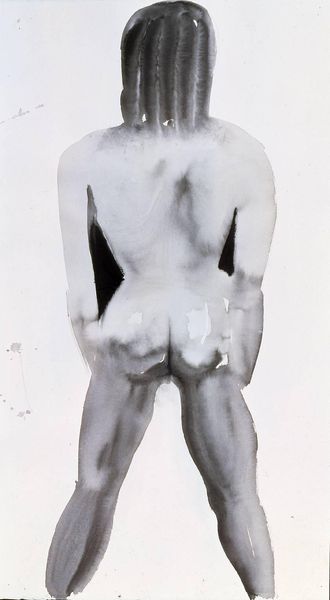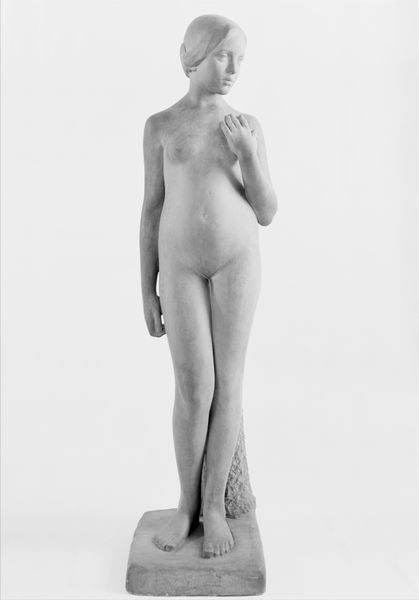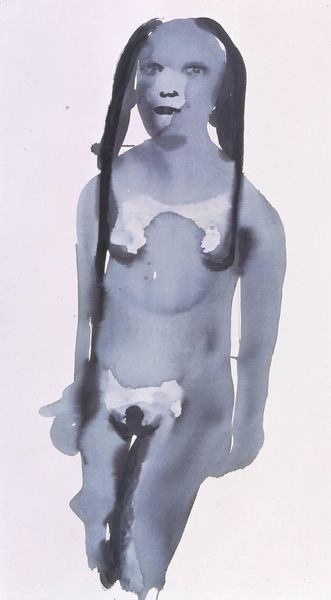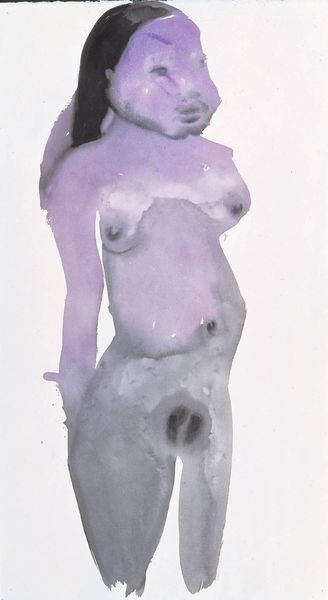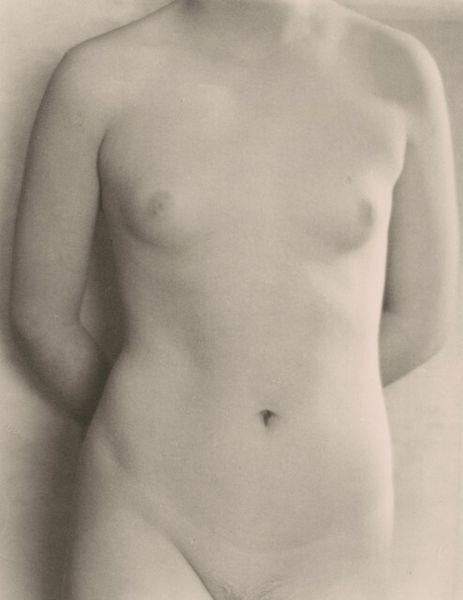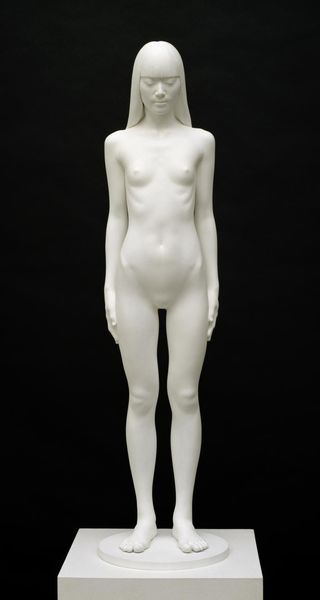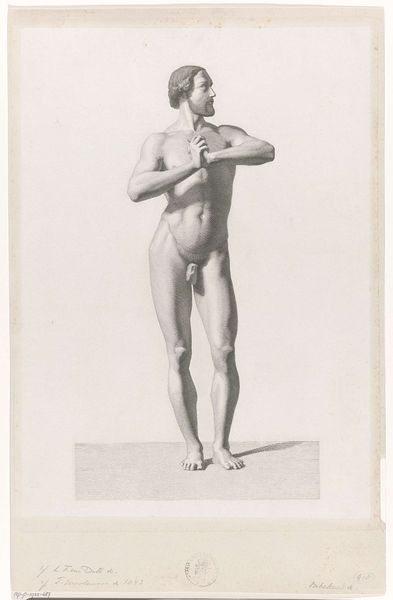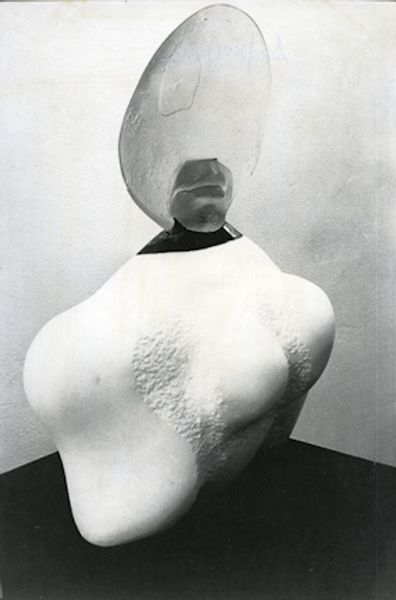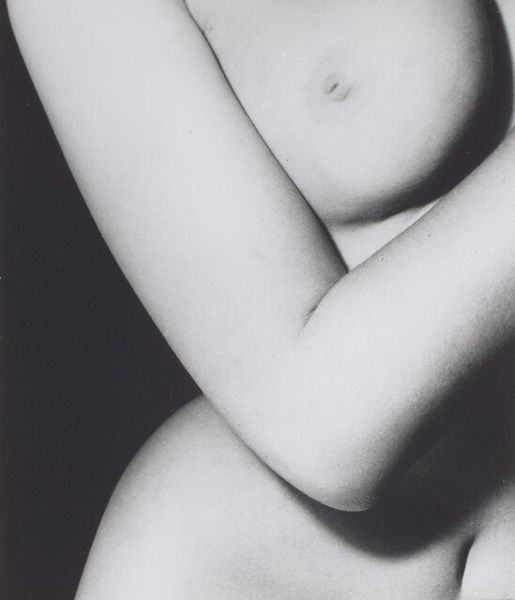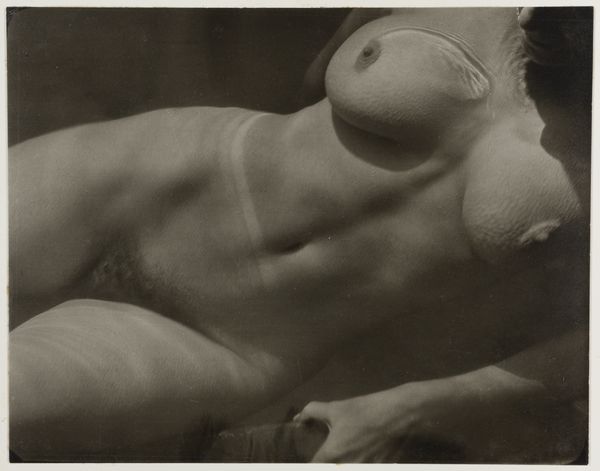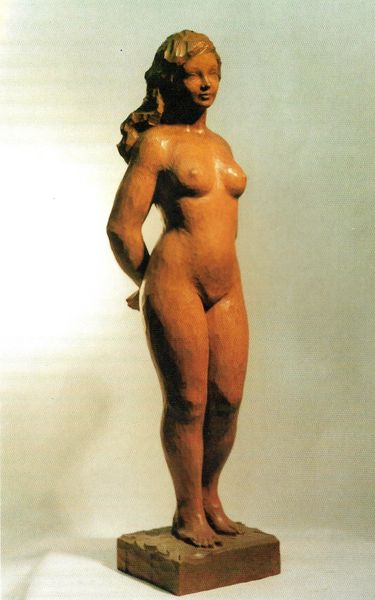
Dimensions: image: 1250 x 700 mm frame: 1339 x 789 x 40 mm
Copyright: © Marlene Dumas | CC-BY-NC-ND 4.0 DEED, Photo: Tate
Editor: Marlene Dumas' "Magdalena 2," presents a haunting, almost ghostly figure. The washes of grey create a sense of vulnerability. What symbolic readings do you draw from this piece? Curator: The title "Magdalena" immediately evokes Mary Magdalene, a figure of both sin and redemption. Dumas often explores themes of sexuality, shame, and the gaze. Notice how the figure's gaze is averted, perhaps embodying a sense of internalized judgment or societal pressure. Editor: So, it's less about religious iconography and more about the psychological weight carried by such figures? Curator: Precisely. The figure becomes a vessel for exploring broader anxieties around female identity and the historical burdens placed upon women. The ambiguity of the washes only intensifies this feeling. Editor: That's a compelling way to look at it. I'll never see it the same way again. Curator: Indeed, art invites us to constantly re-evaluate our understanding of these timeless symbols.
Comments
Join the conversation
Join millions of artists and users on Artera today and experience the ultimate creative platform.
tate 6 months ago
⋮
The Biblical figure Mary Magdalene was one of the followers of Jesus. Traditionally presented as a former prostitute, she is one of the principal archetypes for the representation of female sexuality in western art – a tradition that Dumas subtly undermines in this series of highly individual portraits. ‘I liked the fact that this woman wants this man and he says ‘no’. My men are often supposedly ‘feminine’ while my women are more ‘masculine’ (if you want to use these distinctions still)’, Dumas has said. ‘I use religious subjects as I use fairy-tale figures, in order to give my audience an easy starting point, a popular reference that relates to all times and that is familiar to most people’. Gallery label, March 2008
